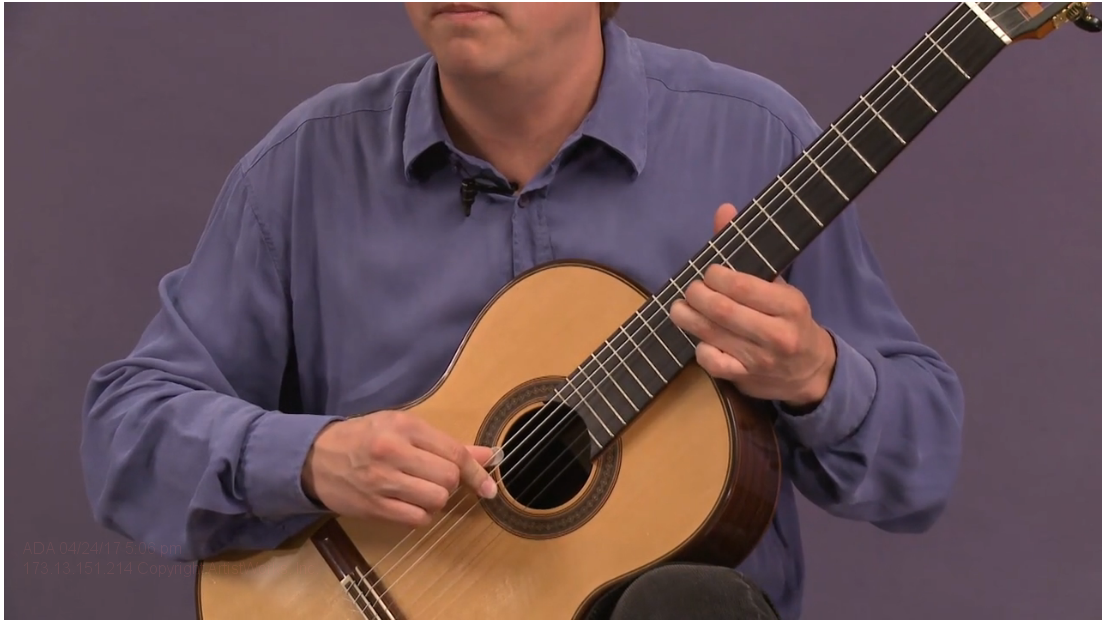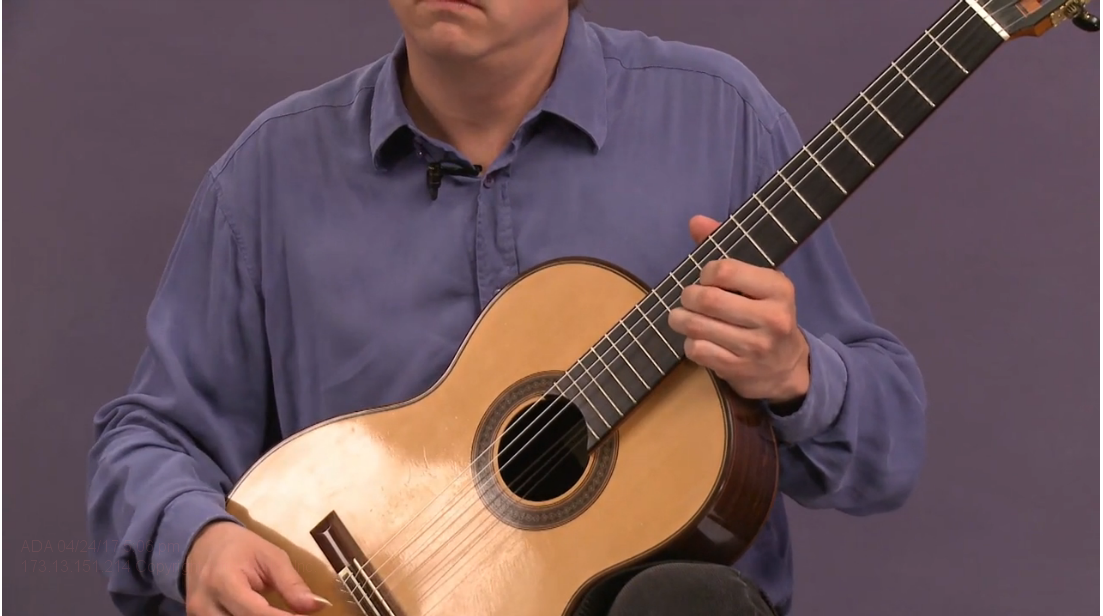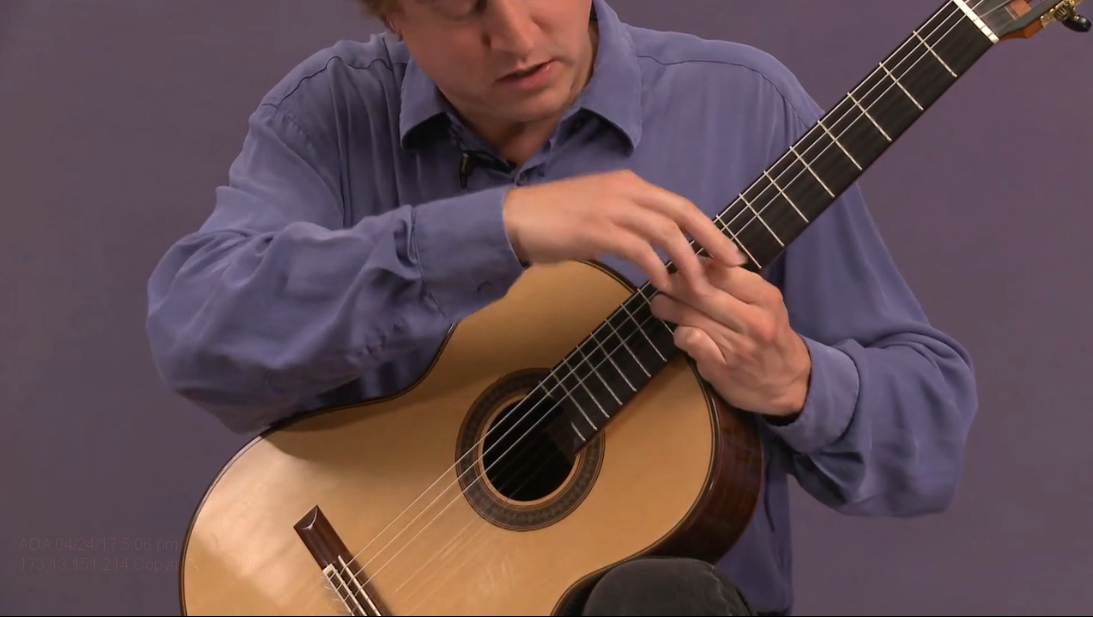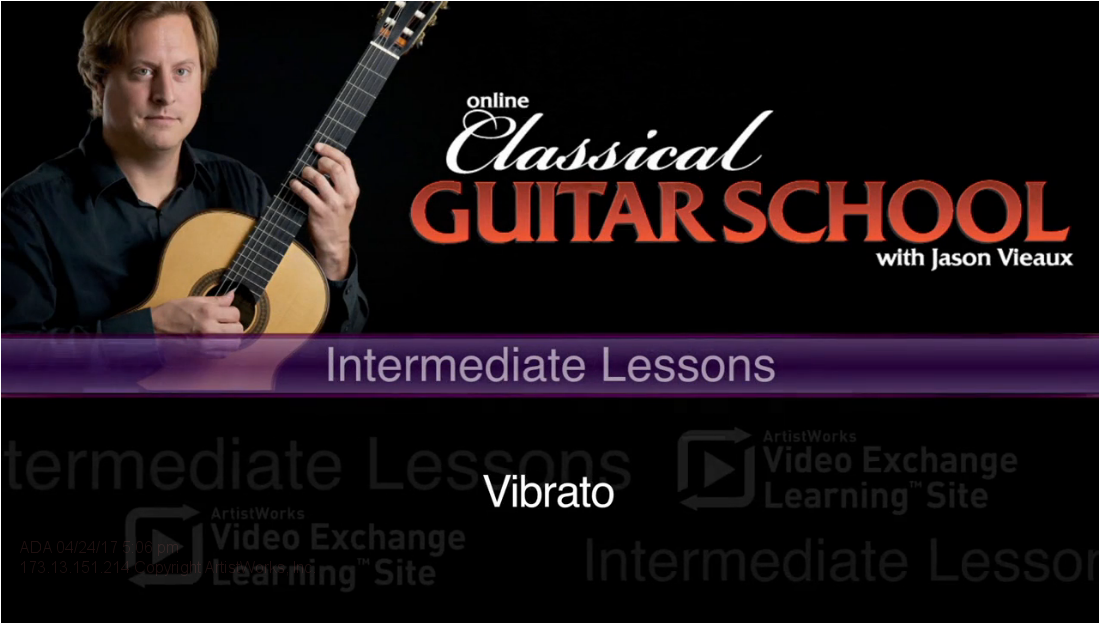Vibrato Technique for Classical Guitar

Jason Vieaux aptly describes vibrato as a classical guitarist to make the guitar sing. It's a key component of adding a lyrical element to a piece of music, so let's discuss some different ways to improve your technique. Soon your vibrato will have your guitar singing like a star.
The Basics
First of all, it's important to understand the physical aspect of how we create the vibrato effect on the guitar. Unlike electric guitarists, who “bend” the string to create a vibrato effect, or string players, who “roll” their fingers up and down the string, we need to “push” and “pull” the string towards the bridge and the nut respectively to create the vibrato effect.

This skill, unlike most other guitar skills, uses the shoulder and upper arm to guide the motion of the finger, as opposed to the wrist and elbow. Your wrist should actually feel somewhat locked in place when you are performing vibrato, and your elbow will raise as you push the string, and lower as you pull the string.
The easiest place to practice and develop this technique is at the 12th fret on the D string. Listen for the vibrato as Jason Vieaux performs here:
Speed and Pitch Variance
Once you feel comfortable with the basics of vibrato, you should go ahead and try practicing it at different speeds and pitch variances. In this case speed refers to how fast you are vibrating the note, while pitch variance refers to how much you are vibrating the pitch away from the original note. The speed element is pretty straightforward (how quickly you move your arm), while the pitch variance can be a little tougher to master.
Essentially, the pitch variance is determined by how much you are pushing and pulling the string as you vibrate your arm (as the range of motion of your arm increases, pitch variance will also increase). Use a metronome to practice differing speeds and pitch variances, from slow and subtle to fast and fluctuating.
Fingers and the Fretboard

Make sure you are practicing vibrato with each finger equally, as well as all along the fretboard. As Jason Vieaux says, the 12th fret of the D string is the easiest note to practice vibrato on, so use that note to practice vibrato with all four fingers individually.
Once you feel comfortable enough, start moving around to different strings and frets to practice applying vibrato all over the fretboard.
Vibrating Multiple Notes
A slightly more advanced vibrato technique is the ability to vibrate multiple notes at a time, or even barre shapes. You can work with simple interval shapes to develop this technique, and then move onto triad shapes and eventually to barres.
The key is to vibrate the strings so all of the notes sound continuously and are not muted or buzzed. Have patience as you develop this technique, and be sure to use a metronome to practice vibrato at different speeds.
Make the Guitar Sing
As Jason Vieaux explains in his lessons at ArtistWorks, the goal of vibrato is to make the guitar “sing.” Since vibrato is rarely written into classical guitar pieces, it will be up to you to determine where and when to use the technique.
Try not to overdo it. Vibrato works as an expressive tool only when used artistically and intentionally, so make sure you avoid adding it to every note in the piece. Watch professional players to hear how they are using vibrato to add lyricism to pieces, and make sure you are practicing your vibrato technique on a regular basis.
Don't forget to have fun with it... give your guitar a voice and sing out!
Jason Vieaux teaches classical guitar online at ArtistWorks. Click here to see some free sample lessons!
Related Blogs:








Comments